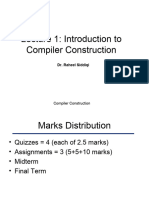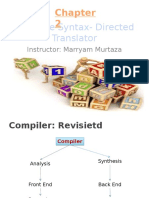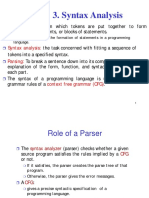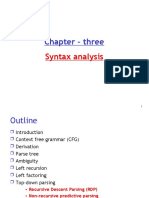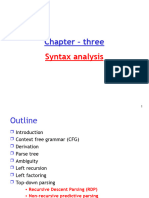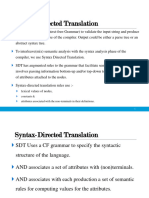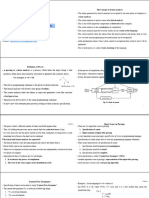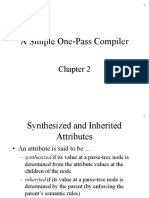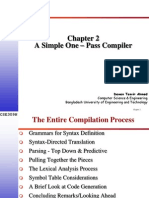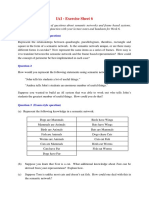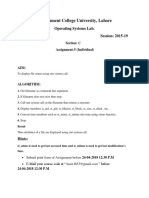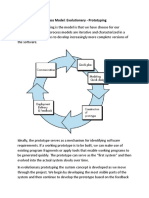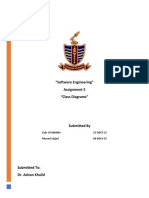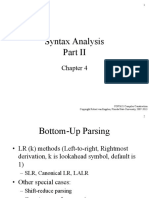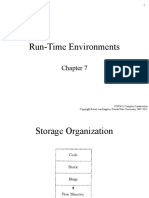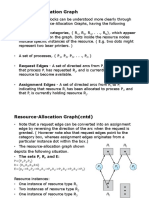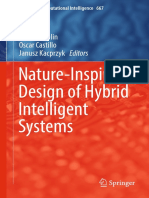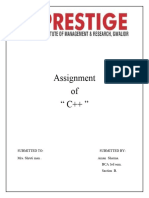0% found this document useful (0 votes)
53 views39 pagesCh2 Modified
1) The document describes building a simple compiler by defining a programming language syntax using context-free grammar, developing a predictive parser, and implementing syntax-directed translation to generate intermediate code.
2) A context-free grammar consists of tokens, nonterminals, productions, and a start symbol. Productions specify rewriting rules to derive strings from the grammar.
3) Derivations and parse trees represent the structure of strings according to the grammar. Derivations apply productions to replace nonterminals, and parse trees visually depict the structure.
Uploaded by
Hassnain AbbasCopyright
© © All Rights Reserved
We take content rights seriously. If you suspect this is your content, claim it here.
Available Formats
Download as PDF, TXT or read online on Scribd
0% found this document useful (0 votes)
53 views39 pagesCh2 Modified
1) The document describes building a simple compiler by defining a programming language syntax using context-free grammar, developing a predictive parser, and implementing syntax-directed translation to generate intermediate code.
2) A context-free grammar consists of tokens, nonterminals, productions, and a start symbol. Productions specify rewriting rules to derive strings from the grammar.
3) Derivations and parse trees represent the structure of strings according to the grammar. Derivations apply productions to replace nonterminals, and parse trees visually depict the structure.
Uploaded by
Hassnain AbbasCopyright
© © All Rights Reserved
We take content rights seriously. If you suspect this is your content, claim it here.
Available Formats
Download as PDF, TXT or read online on Scribd
/ 39







